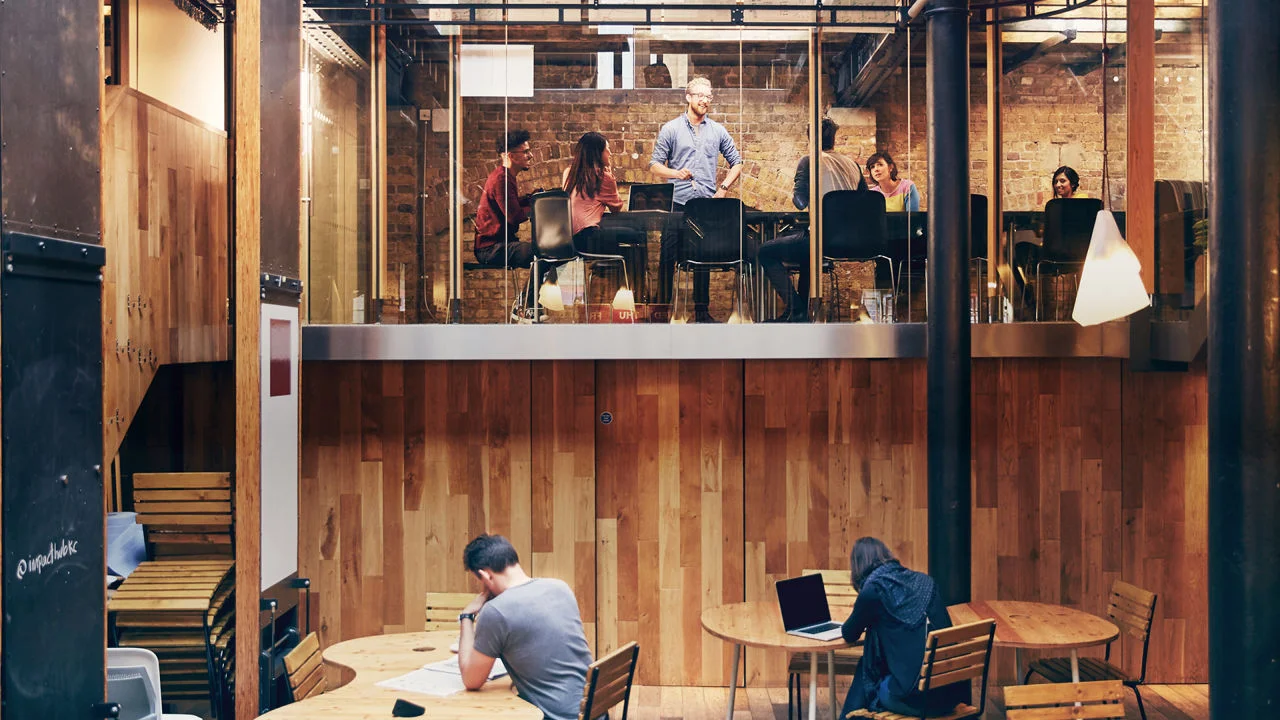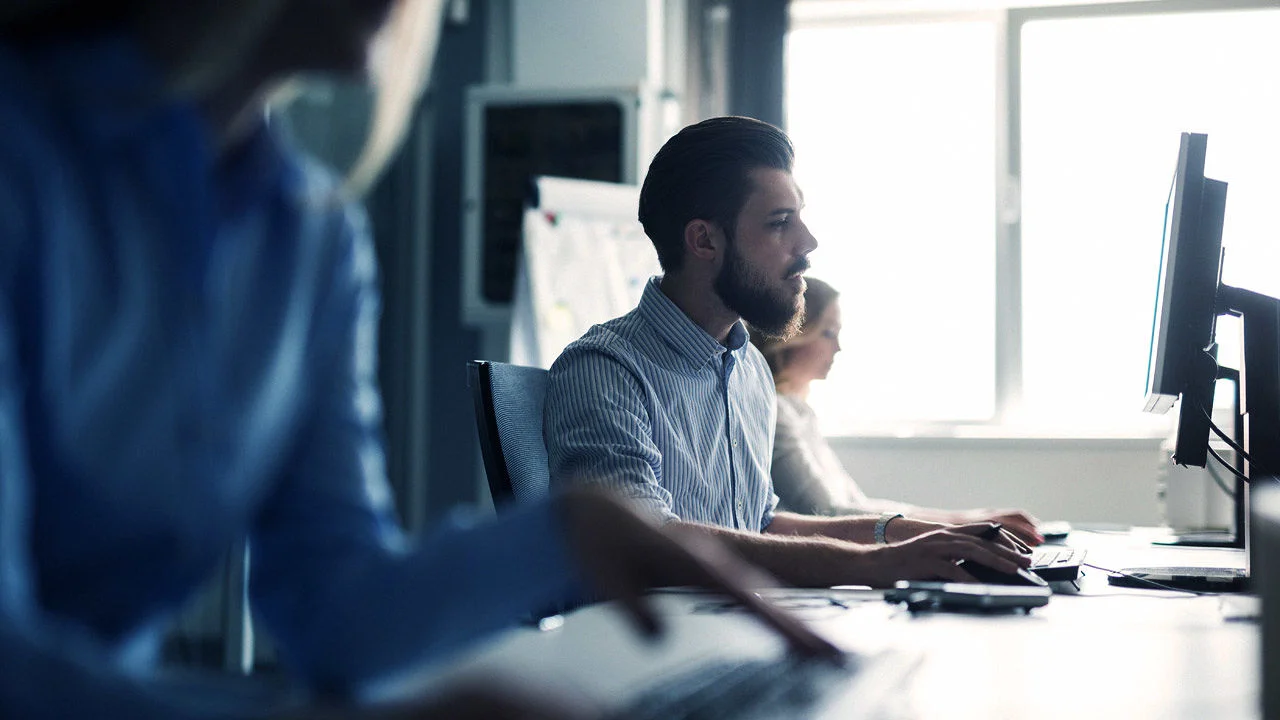The first half of the year has proven the U.S. office game is still strong, but 2015's banner year will be hard to beat. The volume of office sales completed in the first half of 2016 has dipped compared to the same time last year, according to early CoStar data. Hans Nordby, managing director for CoStar Portfolio Strategy, labeled this latest statistic "a worry" because a drop in transaction volume "generally portends a decrease or at least a flattening in prices."
It's Easy Being Greengreen
It's a concrete jungle out there -- literally. Humans today consume more concrete than any substance aside from water. That presents a huge problem for the environment. Concrete comes from cement, and each ton of cement generates a matching ton of carbon emissions. Many builders and designers are recycling water or installing energy efficient light bulbs in hopes of reducing their buildings' carbon footprint. But those approaches can only go so far. Instead, employers and builders must think about going green the moment they decide to construct a new office -- or renovate an old one. New technologies and building techniques can empower them to do so.
Can Good Design Cure Your Headache?
How can workplace design alleviate your headache? Well, it can certainly help. Aside from the obvious challenges of workflow and wayfinding, what are some of the layers of interaction between behavior and space that affect human well-being and performance?
HOK’s Curtis Knapp and Kay Sargent Discuss Top Trends in Workplace Design
Today, we are no longer simply designing spaces. We are designing to support the business case of clients, and to engage and empower employees by creating an experience. Workspaces today have to be effective, energetic and flexible by offering a variety of settings and options to accommodate the workforce. Spaces also need to promote health and well-being.
Companies are looking to create genuine experiences to support a wide range of workstyles and worker profiles. HOK’s workplace design and consulting teams introduce research and science to help clients with decision-making instead of anecdotes and opinions.
The Importance of Genuine Relationships in The Workspace
We’re no strangers to the powers of design; not only can it drive creativity and innovation, we also know that it can contribute to revenue, wellbeing, drive collaboration, and enhance our overall work experiences. Gensler’s survey strengthens the claim that workplace design goes beyond aesthetics, but the survey also brought forth the importance of collaboration and genuine relationships in any workspace.
Brainstorming Is Dumb
If you work in an office, your boss has probably forced you into a brainstorming session or two (or 12). Brainstorming, after all, is supposedly a killer way to come up with ideas, and businesses want to take advantage of all that collective creativity. But it turns out that brainstorming is actually a terrible technique—in fact, people generate fewer good ideas when they brainstorm together than when they work alone. Thankfully, there’s a better way: a technique called brainwriting (think brainstorming, but with a pen and paper and less chitchat). And in a new study, researchers tested out variations of this method to understand exactly how to help people come up with their best ideas.
An Inconvenient Truth for the UK Workplace?
They say timing is everything. Our 2016 UK Workplace Survey (WPS) launched against a backdrop of huge political turmoil in the wake of the EU referendum. The UK’s decision to leave the European Union after 43 years – the so called ‘Brexit’ – polarised the nation, and the press exposed the uncomfortable, but obvious differences between the privileged vs. the less privileged, metropolitan vs. rural dwellers, young vs. old, educated vs. less educated.
How Where You Sit In Your Office Impacts Your Productivity
Your office seating chart may hold the key to how happy and productive you are at work. New research from Cornerstone OnDemand and Harvard Business School suggests that rearranging desks or sitting next to someone with a complementary work style can be a cost-effective way to inject energy and efficiency into the workday.
Six Key Drivers Transforming Healthcare Business
Healthcare expenditures in the U.S. are ballooning, with projections indicating an increase of $3.5 trillion between 2010 and 2040. There are numerous factors spurring such robust growth, yet the two prime factors are a graying population and millions more Americans insured under the Affordable Care Act. At first blush, the future for the health services industry would seem rosy. Yet a closer look reveals that upward sloping expenditures don’t necessarily correlate to increasing revenues. Profitability is still a concern, particularly for hospitals, which are dealing with upticks in labor expenses and the cost of supplies. (In fact, many hospitals are still figuring out how to precisely measure their costs.)
Millennials Are Driving a Creative Office Surge in Suburban Markets
When one thinks of a creative office, it’s usually in urban scenarios. Or maybe in places that are technology hotbeds — such as San Francisco's SoMa, Silicon Valley, or New York City’s Chelsea. But, that is changing, and these types of developments are hitting suburban locales across the country.
New Study: Work Is Making Millennials Really Unhappy
Youth, the old saying goes, is wasted on the young. And apparently, the data backs this up. Looking back, your 20s might seem like a carefree period of music festivals, dubious housekeeping standards, career experimentation, and generally unabridged freedom. But when happiness app Happify combed through the data generated by its product not too long ago, it found a reality that belied such stereotypes of carefree youth. According to this large, if specific, data set at least, your late 20s are likely to be the most miserable years of your life.
Why Co-Working Space Is Good For Employees And Companies
Co-working spaces are happier spaces, it seems, with the people in them reporting more job satisfaction, productivity and, well, happiness than the folks in regular offices – the ones with just one company or department in.
Why does a workspace with different companies, freelancers and hot-deskers make its people happier? Yes, freelancers and smaller companies tend to be doing what they love to do, rather than just working a McJob, but there are other reasons.
THREE STRATEGIES TO INCREASE MOVEMENT BY DESIGN
Can design make you healthier? Can you leave work in the evening feeling better than you did when you clocked in that morning? Leigh Stringer thinks so. In this piece, exclusively for our premium subscribers, enjoy an excerpt from Stringer’s new book, The Healthy Workplace. The tips below appear in chapter four, “Maximize Energy, Avoid Crashes”.
Read the article on workdesign.com > [paywall]
The Best New Healthcare Design Borrows An Old Healing Technique: Plants
As innovations in the medical field make their way from theory to practice, the architecture of healthcare facilities often follows suit. The idea that access to nature improves patient health isn't new: In the 19th century, asylums often reflected a V-shaped footprint based on the now-debunked theories of psychiatrist Thomas Story Kirkbride—who argued that the shape would allow all the wings to get fresh air and light, part of his "morality" cure for mental illness. Finnish architect Alvar Aalto incorporated numerous balconies and loads of windows into the iconic Paimio Sanatorium, since fresh air and sunlight were considered essential for curing tuberculosis. In the 1970s, Danish artist Poul Gernes festooned Copenhagen's Herlev Hospital with vibrant colors since the doctors believed a "nice" environment would help speed patient recovery.
Businesses worldwide ready to welcome robots into workplace
Businesses are ready to embrace the new era of robot workers, automation and artificial intelligence, according to a new report. The Robotic Workforce Research study by AI specialists Genfour claims that more than half of respondents globally are ready to embrace the arrival of robots in the workplace. Almost half of respondents believe that between 10 and 30 percent could be subject to automation. Across all businesses in the UK and US, 94 percent responded that they would either embrace robots or felt a robotic future would be inevitable. Almost half (46 per cent) of UK businesses say they are set to welcome robots at work. A similar proportion (47 per cent) believe it is inevitable, and a third (32 per cent) believe they’ll be able to automate as much as 20 per cent of their business as soon as the technology becomes available. Just seven per cent are worried robots would steal jobs and 16 per cent currently have not planned automation.
Outmoded desk phone will disappear within next couple of years
A new survey has confirmed the imminent death of the ‘nearly useless’ desk phone, which while still in evidence within many organizations, is believed by one third of workers will disappear in two to three years. With both corporate and remote workers increasingly away from their desks, 65 percent already have a ‘desk phone optional’ work environment and over half (59 percent) believe the desk phone is outdated. The 2016 Report on Business Communications in the Era of the Anywhere Worker, by Dialpad, among end users to executives, on cloud communications adoption rates and expectations, also found that businesses of all sizes are adapting to the “anywhere worker” movement and as employees increasingly rely exclusively on mobile technologies, the organizations they work for are quickly evolving to meet their mobility demands and prepare for more anywhere workers in the future. In fact, 84 percent of responding companies already have remote workers.
Work in Progress: Putting Evidence-Based Design Into Practice
Above all else, global architecture and engineering firm HDR values the importance of teamwork and collaboration—not simply as the core of its creative process, but as a visible element of its designs. And so when HDR decided to relocate its Twin Cities architecture studio to a new location, it had one basic concept in mind: “Start by listening.” Designed with input from surveys and focus groups, this office stands as a first-hand experiment for HDR’s evidence-based design process.
Coworking: More Than Just a Fad
Even though we have designed coworking spaces in many shapes, uses and sizes for several years, like many others, I’ve kept thinking the fad would eventually end: the novelty would wear off, and we’d have flooded the market with a lot of spaces that remind us of the pre-1999 dot com era landscape. But I’ve changed my mind. The coworking phenomenon (yes, it truly is a phenomenon) continues to evolve, a harbinger that we’re in store for more evolution and maturation of this concept.
Silicon Valley’s co-working boom is no cure for its crushing loneliness
Silicon Valley may be satire, but the HBO television show hits eerily close to home for many people in the technology and start-up worlds. Among the many things it gets right is the tech world’s obsession with co-working spaces.
On the show, the absurdly arrogant yet lazy Erlich Bachman runs his own incubator, inviting founders to live and work in his home. Eventually he gets some competition from Big Head, a similarly aimless character who turns his newly purchased mansion into another incubator.
How Your Office Design Can Help Your Team Get More Done
What has no internal walls, height-adjustable desks, floor-to-ceiling whiteboards, the latest in video communications technology - and a great view of Mount Fuji on a clear day?
This is #WhereIWork! When Rakuten headquarters relocated last year to a new building in Setagaya, Tokyo, we did more than change our address. We changed everything about our office and the way we work in it every day. For example, instead of a traditional CEO office, with doors and waiting rooms, my own new workspace just flows into everyone else's. We did away with all of the traditional offices. And to encourage communication and collaboration, there are no internal walls between workstations.

























